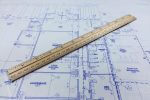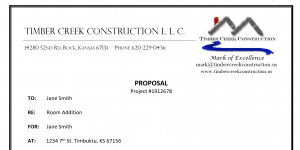The Bible is a Blueprint for Building Our Best Life
We live in a world of idea bombardment, and it’s hard to sort through it all to know what is real. We see things on the news, social media, the internet, and TV programs. We hear things from our family, friends, neighbors, and community. So many different opinions.
The world thrives on conflict.
How can we determine what is real and what’s not, what’s right and what’s wrong? This is a subjective question that can be hard to answer. Who do you believe and why?
Just like building a structure can be done in a variety of different ways…so can your life. Ultimately some things work, and some things don’t. A house without a roof is going to get wet inside when it rains. A house without a foundation is not going to stay standing when the ground erodes.

A house built on a solid foundation will weather the storm.
Back to the question of how can we know how to build our best lives? Just like building a good building, we need a plan…a blueprint. Just like how a building project doesn’t go well when the blueprint is ignored, so it is with our lives and ignoring the Bible.
The Bible is our blueprint for building our best life.
Using a blueprint requires some work. Just because you have a blueprint in your office doesn’t mean it’s going to help you if you don’t get it out and use it. This doesn’t mean that unrolling it and flipping through the pages is enough…it’s not. You need to study it, learn it, and implement it or the building will not turn out well.
The same is true for life. If we don’t get the Bible off the shelf and study it, learn it, and implement it, our lives won’t turn out well.
A good builder doesn’t just look at the blueprint once and then put it away. There are questions and problems that come up constantly throughout the project. He uses it every day until the project is finished. The more he studies it, the more he knows about what is expected.
We should use the Bible in the same way. We should study it daily so that we know what is expected.
Another problem that can happen with blueprints is when a builder doesn’t fully understand or misinterprets the blueprint. Just looking at the foundation plan doesn’t tell us about the roof. Just looking at one page of the print will lead to mistakes in the construction as well as subcontractors being led to do the wrong things. This is why it’s important to ask questions and discuss it with the architect and other builders.

This happens with the Bible as well. We can’t just pick and choose a verse here or there and not know the whole plan.
You need to take the whole Bible into account so that you don’t make a mistake when building or lead others to.
Blueprints let us see what the architect expects from the builder. He shares all the different aspects of a building and how they should fit together. A builder who has built buildings before can begin to think he knows how to build and doesn’t need a blueprint. Inevitably this is when mistakes happen and can be very costly.
God is the architect of our lives and when we begin to think we know more than Him problems are sure to happen.
A builder must decide if he’s going to trust the architect’s plans or not. He can ignore them and build the building however he wants. The problem is…the building doesn’t belong to him, and if it’s built wrong, he won’t get paid.
The same is true for us. We have free will, and we can live our lives however we want.
The problem is, in the end, the payment we receive will be what we earned.
Use the Bible as your life blueprint. Get it off the shelf, study it, learn it, ask questions, and build your best life.

This past Sunday, Jim Miller shared the message to “Just Tell Them the Truth”. Here is a list of Scriptures that he used throughout his message.
- Matthew 6:33
- 2 Corinthians 11:2-3
- Ephesians 4: 14-15
- Colossians 2:8
- 2 Timothy 4:1-4
- Hebrews 2:1
- Revelation 2:4-5
- Revelation 3:3
- Romans 3:23
- Romans 6:23
- Romans 5:8
- Romans 10:13
- Romans 10:9
- Romans 12:1-2













 STEP 1 – Gathering Information
STEP 1 – Gathering Information Next is putting prices to the project. This process involves two different Excel spreadsheets, the Worksheet and the Data Base. Based on the descriptions written on the Bid Sheet, content from the Data Base will be copied and pasted into the correlating cells on the Worksheet. After the pertinent information from the Data Base has been placed on the Worksheet it’s time to fill in the specific quantities.
Next is putting prices to the project. This process involves two different Excel spreadsheets, the Worksheet and the Data Base. Based on the descriptions written on the Bid Sheet, content from the Data Base will be copied and pasted into the correlating cells on the Worksheet. After the pertinent information from the Data Base has been placed on the Worksheet it’s time to fill in the specific quantities.

 It is common for people to start a business without a plan. Generally, someone has learned a trade or a craft and for whatever reason they decide to go into business on their own. Most of the time they have given little, if any, thought to business structure. They show up every day working hard and then…surprise, you owe some taxes and haven’t saved any money to pay them. They needed a plan, a blueprint for building the business.
It is common for people to start a business without a plan. Generally, someone has learned a trade or a craft and for whatever reason they decide to go into business on their own. Most of the time they have given little, if any, thought to business structure. They show up every day working hard and then…surprise, you owe some taxes and haven’t saved any money to pay them. They needed a plan, a blueprint for building the business.